Helping Dolphins: Strategies for Conservation and Welfare
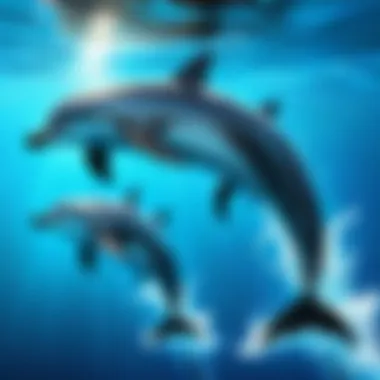

Intro
Dolphins are remarkable creatures that play an essential role in marine ecosystems. Their intelligence, social structure, and nurturing behavior make them a favorite among nature enthusiasts and researchers alike. However, the dangers they face in the modern world are substantial — from habitat destruction and pollution to entanglement in fishing gear and the impacts of climate change.
This exploration focuses on efforts to improve the conservation and welfare of dolphins. It emphasizes a holistic approach in addressing the challenges posed to these mammals. By investing in technology, raising awareness, and encouraging community involvement, we can collectively work towards ensuring healthy dolphin populations.
Through the sections following this introduction, we hope to provide a thorough analysis of what dolphins mean to our world, the threats confronting them, and how technology and public engagement emerge as powerful allies in their preservation.
Technology Insights
The intersection of technology and dolphin conservation is a captivating area, bringing together innovations from various sectors. New methodologies and tools are rapidly evolving, allowing researchers and activists to gather data and action against key problems affecting dolphin populations.
Latest Tech Trends
The adoption of advanced barometers and drones provides precision in both research and conservation efforts. For instance, aerial drones offer a vista of marine life in often inaccessible areas. This allows for monitoring dolphin patterns and spotting crucial changes in population dynamics without intruding on their natural behavior.
- Digital Acoustic Monitoring: This keystone elicits an exceptional understanding of dolphin communication.
- Satellite Tagging: It facilitates tracking wide-ranging migration patterns and habitat preferences. Higher accuracy in understanding their pathways means better-prepared interventions.
Innovation in Tech
Amongst notable innovations, software development is pertinent for analyzing incoming data about dolphin populations. Machine learning serves to catalog and interpret sounds made by dolphins. Consequently, we can better appreciate their needs and habits by mapping interactions and behaviors.
Furthermore, apps designed for public reporting of stranded or injured dolphins systematically integrate observations made by coastal communities. This proactive involvement sparks enthusiasm and decisiveness in conservational efforts.
“Advancements in technology foster deeper connections and higher responsibilities towards marine mammals in distress.”
Product Reviews
Diving into specifics, we can examine a few tools directly affecting dolphin conservation:
- Wildlife Acoustics’ Song Meter: This device holds potential for ongoing monitoring of dolphin vocalizations, promoting research efficiency.
- Limpet Technology: Their tagging systems help partake in the important quest of understanding migration currents.
By implementing and regularly updating these technologies, stakeholders gain insights crucial for effective conservation strategies.
Furthermore, as our understanding deepens, a collaborative synergy develops among researchers, volunteers, and technology firms. With support and funding, sustainable initiatives can turn potential fallacies into concrete strategies for saving dolphin populations globally.
Understanding Dolphins
Understanding dolphins is essential for developing effective conservation strategies and enhancing efforts directed at their welfare. Dolphins play a vital ecological role, and their biological and behavioral traits significantly influence marine ecosystems.
Biological Characteristics
Physical Attributes
Dolphins have unique physical attributes that make them highly adapted to aquatic life. Their streamlined bodies are a crucial feature, allowing for swift movement in the water. This adaptation is favorable when they are hunting for food or evading predators. A notable characteristic is their dorsal fin, which aids in stabilizing the animal while swimming at high speeds.
Another key physical aspect is the presence of echolocation abilities, giving dolphins the capacity to find and catch prey in dark or murky waters. This quality is beneficial for communication and navigation, enhancing their overall effectiveness in the wild against various challenges they face.
Communication Abilities
Dolphins exhibit remarkable communication abilities, utilizing a complex system of vocalizations, clicks, and body language. Their capacity to convey nuanced information is advantageous, particularly when coordinating efforts during hunting or socializing within pods. The intricate sounds dolphins produce can indicate aspects such as location signals, distress calls, and emotional expressions.
Importantly, communication also plays a role in social structure, impacting how dolphins bond and interact within groups. Miscommunication can create misunderstandings, but their refined abilities generally facilitate a well-functioning social group. This aspect is valuable when considering the overall conservation of dolphins, as understanding their means of communication can aid in creating environments that promote healthy social interactions in rehabilitation programs.
Behavioral Patterns
Social Structures
Dolphins possess strong social structures, often forming pods that serve various purposes including protection and cooperative hunting. These reationships provide social support and stability within their communities. Specifically, the hierarchy can influence feeding and reproductive behaviors, vital for maintaining population numbers.
Pod dynamics reveal how dolphins express social bonds and care for one another, demonstrating maternal instincts that facilitate offspring development. Such behavioral traits emphasize their role as intelligent animals and suggest that preserving social structures is imperative in conservation efforts for effective dolphin populations.
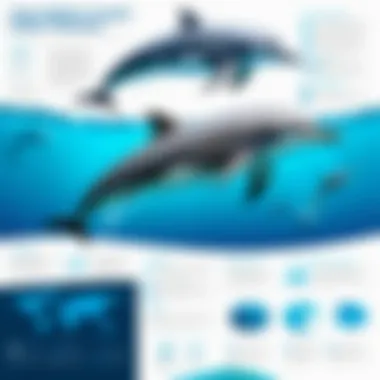
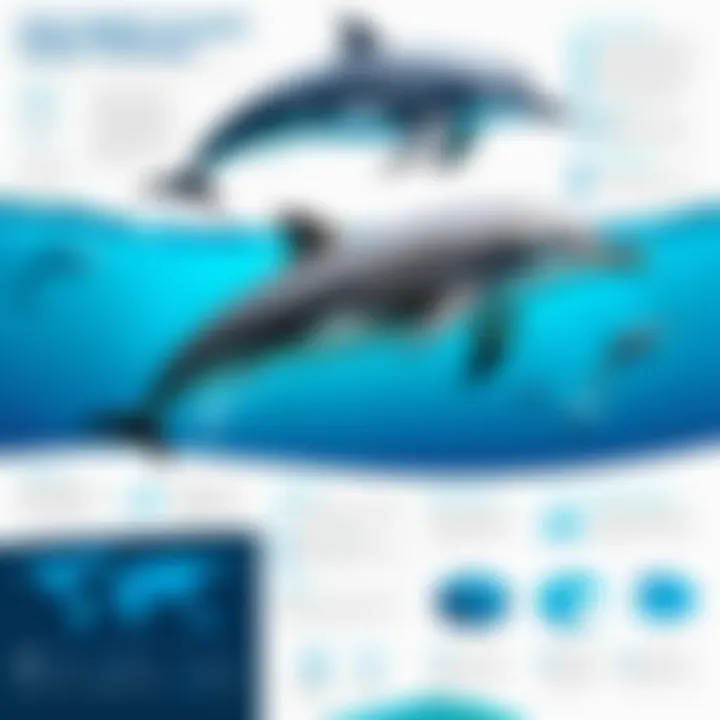
Feeding Habits
Dolphins adopt specific feeding habits that align with their environment and social structure. Their diet typically includes fish, squid, and invertebrates, underwriting their predatory behavior. The ability to hunt cooperatively allows for greater success when acquiring food and teaches younger generations skills necessary for survival.
Feeding also impacts the ecological balance within their habitats. By targeting specific prey items, dolphins influence populations of other marine species, reinforcing their role in maintaining healthy ecosystems. Consequently, understanding their feeding habits provides insight into the broader ecological implications of dolphin conservation efforts.
Ecological Role
Importance in Marine Ecosystems
Dolphins are considered keystone species due to their significant influence on marine food webs. They help control the population of fish and squid species, contributing to a balanced ecosystem. Consequently, protecting dolphin populations indirectly supports health and stability in marine biodiversity.
Their presence indicates a robust marine ecosystem, making conservation of dolphins critical for overall ocean health. Positive outcomes can result from conservation initiatives that emphasize their importance within broader ecological networks.
Contribution to Biodiversity
Dolphins play a crucial role in contributing to marine biodiversity. Each dolphin species occupies a unique ecological niche, performing individual functions that support biological variation in their environments. Their interactions with other species can enrich ecosystems, fostering resilience against changes such as pollution or climate change impacts.
Additionally, the loss of dolphin populations may lead to imbalances in marine life, underlining the urgent need for protective measures. Emphasizing their contribution further strengthens the case for conservation initiatives focused on safeguarding all dolphin species.
Understanding dolphins through their biological characteristics, behavioral patterns, and ecological roles positions stakeholders to better aid in conservatioopsn'tion efforts aligned with their needs and environments.
Current Threats to Dolphin Populations
The survival of dolphin populations faces various threats,, ranging from environmental changes to human activities. Understanding these risks is essential in identifying conservation strategies. Recognizing the importance of each threat helps direct conservation efforts. It allows for targeted actions that can significantly impact dolphin welfare. The fate of dolphin populations is interlinked with marine health and biodiversity. Hence, grasping these threats helps support effective initiatives to ensure successful dolphin conservation.
Habitat Destruction
Habitat destruction presents a critical risk to dolphins. Coastal development, often motivated by urban expansion or tourism, results in loss of essential breeding and feeding grounds. Dredging activities and marine constructions alter underwater environments. These alterations can push dolphin populations into less suitable areas, further stressing their survival. Legal regulations and zoning efforts can potentially mitigate these impacts, guiding development to balance human needs and ecological preservation.
Pollution
Pollution enters the oceans through various channels, introducing harmful substances into dolphin habitats. Addressing this issue is paramount for effective dolphin conservation. Pollution can result in both direct harm and long-termecosystem damage.
Chemical Contaminants
Chemical contaminants in marine environments pose significant risks to dolphins. These hazardous substances, often derived from agricultural runoff and industrial waste, accumulate in marine ecosystems. Their presence can disrupt hormonal systems and lead to reproductive issues. This aspect showcases the urgency of cleaning practices and limiting harmful substances' discharge. Regular monitoring helps understand the chemical burdens on dolphin populations and develops interventions for mitigation.
Microplastics
Microplastics have emerged as a serious contaminant affecting marine mammals, including dolphins. These small plastic particles stem from various sources, including cosmetic products and degraded larger plastic contaminants. They are easily ingested by marine life, leading to internal injury and toxic accumulation. The prevalence of microplastics turns them into a relevant subject for reducing pollution.* Understanding the broader significance of microplastics aids in forming effective bans and cleaner solutions within industries, ultimately benefiting dolphins and ecosystems.
Climate Change
Climate change resulting from human activity threatens numerous species, dolphins included. Its wide-ranging impacts intensify existing challenges that dolphins face in their ecosystems.
Rising Sea Temperatures
Rising sea temperatures disrupt dolphin habitats, particularly problem guarantee optimal biological function in marine species. Underlying this rise is climate change, stemming from greenhouse gas emissions. Warmer waters affect prey availability, impacting dolphins’ feeding practices. Dolphins will struggle with prospects indeed but necessitate ongoing studies to approach ecosystems affected by temperature increases. Solutions progress through innovative technologies aimed enhancing dolphin protection.
Ocean Acidification
Another critical aspect of climate change is ocean acidification, resulting from excess carbon dioxide absorption in seawater. This process drastically alters water chemistry, negatively affecting marine life. Coral reefs and shellfish populations face significant disruption, with predictably detrimental effects on dolphin food chains as well. Adequately understanding the extremities of the problem enables collaborative efforts for emission reductions and collective advocacy aimed at combating climate change.
Illegal Whaling and Hunting
Illegal whaling and hunting practices continue to impose severe threats to dolphin populations. Despite international regulations, some regions still engage in practices threatening dolphins. Capture methods caused may easily disrupt delicate systems; re-integration into habitats will later depend on overlooked support, particularly breeding programs. Upholding legal frameworks and promoting concerted enforcement of laws can conserve global dolphin populations effectively.
Conservation Strategies
Conservation strategies play a crucial role in the efforts aimed at protecting dolphin populations. They outline a series of scientific, political, and community-driven approaches. Effective conservation strategies can result in substantial benefits not just for dolphins but for the ecosystems they inhabit. Deploying these strategies fosters a collaborative environment, enhancing the capacity for environmentally-friendly management practices.
Marine Protected Areas
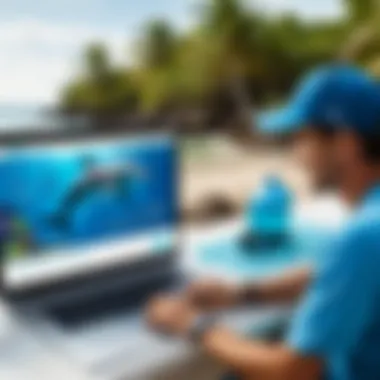
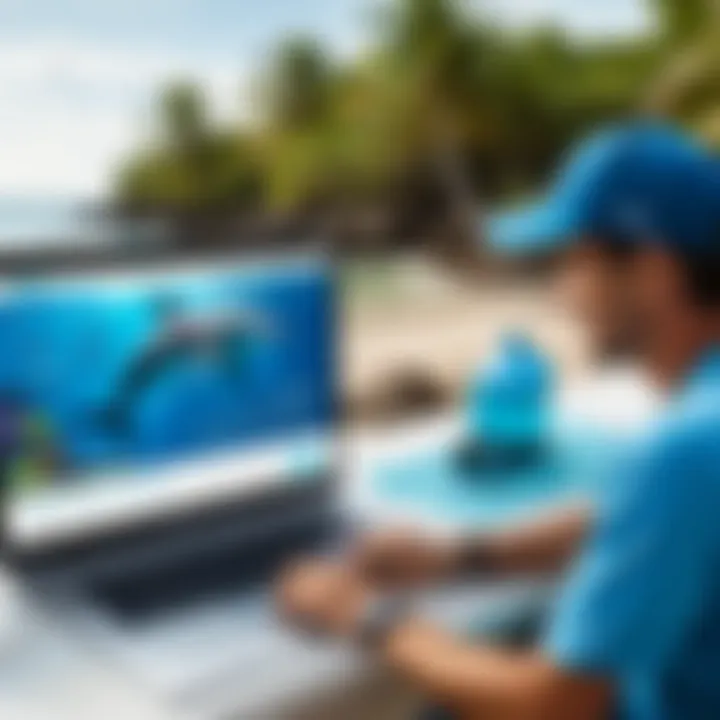
Designing Effective Sanctuaries
Designing effective sanctuaries is a core element of dolphin conservation policies. Such areas are designated to safeguard dolphins and their habitats. They offer a safe haven free from harmful activities like overfishing and pollution. A key characteristic of these sanctuaries is their ability to create refuges where dolphin populations can thrive. This is beneficial as it allows dolphins to interact without the pressures of human presence. The unique feature of these designated areas is the role they play in habitat restoration, though their success relies on regulatory enforcement.
Regulating Fishing Activities
Regulating fishing activities is another major aspect of marine conservation. This involves setting limits on catch sizes, establishing closed seasons, and selecting sustainable practices. By regulating these activities, we aim to minimize bycatch–the unintentional capture of dolphins and other marine life. This characteristic of regulating fishing activities is a popular choice among conservationists. When effective, it leads to healthier populations and reduces competition for food resources. Yet, devising effective regulations can meet resistance from fishing communities, creating challenges in implementation.
Rescue and Rehabilitation Programs
Emergency Response Units
Emergency response units are vital in addressing urgent situations faced by dolphins. These specialized teams are trained to respond promptly to marine mammal strandings or injuries. They provide critical care to dolphins in distress. Most units are volunteer-driven, exemplifying a grassroots approach. Their capability to mobilize quickly is essential, particularly in life-threatening situations. However, the major disadvantage lies in funding and resource constraints which limit their operational capacity.
Public Involvement in Rescue Efforts
Public involvement plays an important part in rescue efforts. Engaging communities fosters a sense of responsibility towards marine life. Local volunteers often play significant roles in initial responses during strandings or sightings of injured dolphins. The highlight of this community engagement approach is its potential for raising awareness. It educates volunteer participants, who then share knowledge with others. The key challenge stems from mismatching understanding of dolphin needs, which can lead to inadequate responses if untrained individuals intervene improperly.
Legal Frameworks
International Treaties
International treaties are critical for setting standards in the conservation of marine mammals. Treaties like the Convention on the Conservation of Migratory Species aim to protect dolphins across borders. Their key characteristic lies in facilitating collaborative conservation efforts between nations. This provides a unified approach to managing dolphin populations. However, adherence to these treaties can vary, leading to enforcement challenges.
National Legislation
National legislation governs how individual countries protect marine species. Laws can include stringent regulations on fishing near dolphin habitats. A notable distinct feature is the framework in which these laws operate within local contexts. Providing a legal backing to conservation actions can help tremendously in efforts to support populations. On the downside, policies might be clashed with local economic interests, potentially leading to ineffective execution.
Role of Technology in Dolphin Conservation
Technology plays a crucial role in dolphin conservation. It facilitates detailed research and efficient monitoring of dolphin populations. As ecological pressures increase, employing technology becomes indispensable. Use of modern methods helps conservationists understand dolphin behavior, navigate challenges, and implement informed strategies for their protection.
Research and Monitoring
Tracking Dolphin Movements
Tracking dolphin movements utilizes sophisticated technology to monitor individuals in their habitat. Effective tracking can reveal migratory patterns and social interactions. GPS trackers and underwater acoustics give precise data, enhancing conservation efforts. Dolphin movements tracked in the wild help address issues such as habitat selection andSpatial ecology. This is favorable because it aids in pinpointing critical areas needing protection.
Moreover, tracking provides long-term data beneficial for scientific analysis. A potential downside is that tracking devices can be intrusive. Minimizing stress on dolphins is essential, and proper placement can be challenging. Yet, the advantages domestically outweigh the limitations.
Data Analysis Techniques
Data analysis techniques enhance our understanding of dolphin populations by turning raw data into actionable insights. Advanced software processes large datasets, identifying trends in dolphin behaviors in diverse environments. Statistical models can predict dolphin responses to changing oceanic conditions. This attribute positions data analysis as instrumental in developing conservation measures. By interpreting the aggregated data, researchers can make informed decisions and prioritize regions requiring conservation attention.
However, the analysis relies heavily on quality data. Flawed or incomplete data can mislead findings. Despite this, effective data analysis methods significantly contribute to the overarching goal of dolphin conservation.
Innovative Solutions
Eco-friendly Fishing Gear
Eco-friendly fishing gear represents a sustainable alternative that minimizes harm to dolphin populations. Such gear reduces bycatch. Bycatch refers to unintended capturing of non-target species, including dolphins. Redesigned fishing nets, traps, and hooks are less likely to entangle marine life. This is advantageous for fishermen and the ecosystem. Stress on the distribution of dolphin populations decreases, creating a better ecological balance.
Implementing such methods takes time. Training fishers and adjusting fishing practices can create challenges but yielding positive long term results. The unique feature is in durability and reduction in hazardous materials, making it fatigue-resistant. Overall, investing in eco-friendly fishing gear is essential for sustainable marine practices.
Drone Surveys of Populations
Drone surveys offer an innovative approach to monitor dolphin populations and assess their habitats. They can efficiently cover vast ocean areas that are difficult to access by other means. Drones provide real-time images and behavioral data, allowing researchers to count dolphins accurately and assess their condition.
A salient characteristic of drone surveys is the non-invasive method used. They reduce human interference in natural dolphin behavior, ensuring that their data remain reliable. Yet, drones must adhere to regulations to avoid dangers and distress to wildlife. Advantages include efficiency and data acquisition, while the disadvantage lies in initial costs and the need for skilled pilots. Overall, drone technology is transforming traditional population surveys and enhancing conservation strategies.
Technological advancements are vital in shaping modern dolphin conservation initiatives and discovering new methods for habitat preservation and sustainable development.


Community Engagement and Education
Community engagement and education serve as pivotal components in the conservation of dolphin populations. These aspects not only help to raise public awareness but also foster a sense of responsibility and stewardship towards marine life. The strength of community efforts lies in the collective action taken by individuals, which can greatly impact dolphin well-being.
Educational initiatives promote understanding of dolphins' ecological roles and the threats they face. By engaging communities, individuals can translate knowledge gained into positive behaviors that benefit dolphin habitats. A well-informed public actively participates in conservation efforts.
Public Awareness Campaigns
Raising Awareness About Threats
Raising awareness about the threats dolphins face is fundamental in stirring public interest. This specific aspect engages communities by informing them of critical issues like habitat destruction and pollution. A key characteristic of raising awareness is its ability to mobilize individuals and groups towards advocacy. It is a popular choice in conservation strategies as it stimulates action and support for vulnerable species.
One unique feature of these campaigns is their ability to utilize social media platforms effectively. This creates broad exposure and reaches diverse audiences. The advantages of such programs include increased visibility for dolphin conservation issues, which can lead to positive behavioral changes and enhanced community involvement. However, challenges exist, such as the saturation of environmental content that may lead to apathy among audiences.
Promoting Eco-Conscious Behaviors
Promoting eco-conscious behaviors enhances dolphin conservation through the cultivation of sustainable practices. This aspect contributes to nurturing responsible interactions between humans and marine ecosystems. A distinguishing trait of eco-conscious campaigns is their capacity to provide individuals with practical guidance on how to minimize their environmental impact.
This concept proves to be beneficial for fostering conscientiousness, driving community support, and enhancing collective environmental responsibility. Unique features may include workshops and accessible online resources. These tools empower individuals to be part of a broader solution. Advantages include raising the standard of community environmental practices, while obstacles could involve dismissiveness from individuals who underestimate their influence on eco-systems.
Educational Programs for Schools
Curriculum Development
Curriculum development for educational programs targeting dolphin conservation brings forth understanding at an early age. This aspect plays a significant role in shaping attitudes towards marine life through structured learning. A notable characteristic of reckoning with storytelling in curriculum development is its ability to resonate with students. This makes it a compelling element in conservation education.
This choice proves to be effective as youth drive change in their communities through awareness. Unique features can include integrating multimedia and interactive materials that enhance engagement. While advantages encompass improved educational outcomes, potential drawbacks could include adaptability challenges in various educational contexts and systems, which may require substantial resource realignment.
Field Trips and Interactive Learning
Field trips and interactive learning experiences provide hands-on education, making dolphin conservation deeply impactful. This specific aspect fosters personal connections between students and marine life. A key benefit of utilizing direct experiences is the emotional engagement they create among young learners. This experience showcases the complexities of dolphins' habitats firsthand.
Field trips strike a popular chord by showing real-world implications of threats to dolphin populations, enhancing student awareness. Unique features like marine biology workshops on boats enrich the educational experience. The advantages include social interaction and experiential learning opportunities, while potential disadvantages may encompass logistical challenges and funding constraints for schools looking to implement such programs.
Engaging the community through education is crucial for elevating awareness and advocating for dolphin conservation. Only through collective efforts can a lasting positive impact be made.
How Individuals Can Help
Individuals play a vital role in the conservation of dolphins. By participating in specific actions, everyone can contribute significantly towards the welfare of these marine mammals. Engaging in efforts that directly aim to support dolphin populations not only fosters a deeper understanding of their importance but also raises consciousness on the threats they face. Notably, actions from volunteers and tourists can yield a compounded effect, enabling substantial strides towards preserving their natural habitats and ensuring sustainable ecosystems.
Volunteering
Local Conservation Initiatives
Local conservation initiatives are essential as they address regional challenges affecting dolphins. These organizations mobilize community members, creating a support network for dolphin welfare. Volunteers often engage in beach clean-ups, educational outreach, or even direct rescue efforts. A critical aspect is community involvement. This can foster a more personal connection with marine life and reinforce the importance of local habitats.
Local organizations typically have established relationships with both citizens and governmental entities. By participating, members help ensure their voices are heard in the conservation dialogue. However, it is vital to note that sometimes these organizations lack funding or advanced tech, which might limit their effectiveness. Despite this drawback, engaging with local initiatives remains a popular choice due to close bonds formed with anyone involved.
Global Organizations
Global organizations bring a broader perspective to dolphin conservation. They often operate at international levels and are resourceful in addressing widespread issues like illegal hunting or pollutants pervading oceans. These entities, such as the Whale and Dolphin Conservation and the Dolphin Project, capitalize on worldwide awareness practices, mobilizing financial support for massive campaigns.
An appealing charcteristic of global organizations is their ability to utilize advanced technological tools and research trends to access putting public insights into practical measures for dolphin conservation. However, individual participation may seem less personalized, and some might criticize the outer influence arising from large NGOs. Certain concerns revolve around transparency and priorities differing from local needs. Nonetheless, the depth of impact these organizations can achieve often outweighs such concerns, marking them as key players in dolphin welfare.
Responsible Tourism
Choosing Eco-friendly Tours
Choosing eco-friendly tours significantly contributes towards the overall preservation of dolphin species. Eco-friendly tours are designed to minimize human footprint on marine environments, often employing sustainable practices that yield long-term benefits for species and habitats. A key characteristic of these tours is the focus on educational experiences, allowing tourists to learn actively about dolphin behavior and their role in marine ecosystems.
The unique features of eco-friendly tours typically include small group sizes and regulated contact with marine species, safeguarding against overexposure or disturbance. This form of tourism engages responsible tourism practices, helping raise funds for various conservation efforts. Although the cost may be higher compared to traditional tours, the alignment with ethical values presents a great advantage that appreciates ecological subtleties and needs.
Minimizing Environmental Impact
Minimizing environmental impact addresses countless aspects of how one can evaluate their travel habits to ensure less harm to dolphins and their habitats. This involves mindful choices, such as opting for accommodations eith sustainable operations or directly supporting businesses that prioritize the local ecology. This approach links back with responsible tourism, as informed decisions conceptually bond economics with ecological well-being.
A key characteristic of this practice is the conscious understanding of consumption. Customers are encouraged to educate themselves about their attractions, waste generation, and movement through natural spaces. Remarkably, travelers can empower local communities by selecting businesses that have environmental certifications. Although changing awareness and habits sometimes takes effort, it translates into minute, yet significant alteration toward a globally favorable outcome for dolphin conservation.
Individual efforts may appear small in scope but rally collectively to drive remarkable change.







